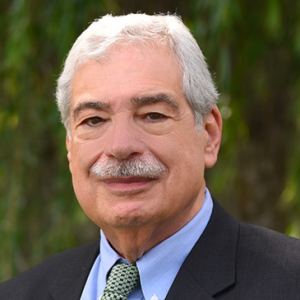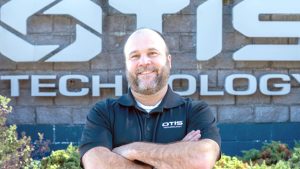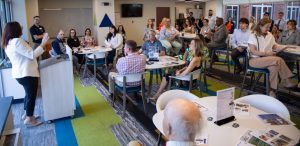The Royal Swedish Academy of Sciences early Tuesday awarded the Nobel Prize in physics to LIGO’s key architects and leaders. They include Rainer Weiss, a professor at the Massachusetts Institute of Technology in Cambridge, Massachusetts; and Barry Barish and Kip Thorne, professors at the California Institute of Technology in Pasadena, California.
Using a pair of giant laser detectors, LIGO “heard” gravitational waves, ripples in space and time, coming from the collision of two black holes, 1.3 billion light years from earth. Their existence confirmed Albert Einstein’s general theory of relativity and opened up new windows of exploration of the universe.
The discovery was announced in February 2016, following five months of “exhaustive” analysis, in which Syracuse played a lead role.
(Sponsored)

Think Your Employees Aren’t Using ChatGPT?
Think again. Survey data is consistent that use of ChatGPT and other “generative” artificial intelligence (AI) platforms is expanding exponentially. While difficult to quantify, surveys suggest that most employees in
The Importance of Relationship Banking for Small Business Success
Small business owners wear many hats. Each day can bring on new challenges requiring valuable time and focus – especially in the competitive economic environment we live in today. The
Syracuse role
Weiss, the co-founder of LIGO, last February participated in a panel discussion at the famed Explorers Club in New York City. He was asked to comment on the contributions of the Syracuse group.
“This is a very exceptional group of people. Of all the people in the collaboration, they represent the ideal members you would like to have in a collaboration,” Weiss said, as recounted in the Syracuse news release.
He also added that the Syracuse team had a “big impact” on the discovery.
“This group was very influential, the Syracuse group, which has pieces in it that are all parts of the experiment. You’ve got a data analyst and a theorist [Brown], experimenter [Ballmer], who really understands the apparatus, and you’ve got a guy who invented a lot of it, Peter Saulson. These people know what’s in that experiment. I think the fact that they came to the conclusion themselves that this thing was real was damn near important thing to have,” Weiss said at the time, according to the Syracuse news release.
Syracuse physics professors
Brown is a leader in the search for black holes with LIGO.
“I am tremendously pleased to see the Nobel committee recognize [Rainer (Rai)], Kip and Barry as recipients of the 2017 Nobel Prize in physics. They are true visionaries, whose leadership has created the new field of gravitational-wave astronomy,” Brown said in the Syracuse news release. “Rai has been a hands-on scientist for as long as I can recall, working on every aspect of LIGO from the lasers and optics to the vacuum systems. Rai is still working on the detectors, making them even more sensitive so they can reach even further into the universe.”
Kip Thorne “pioneered the dream” of using gravitational waves to explore the warped side of the universe, Brown added in the Syracuse news release.
“He was confident that black holes would be the first source that LIGO detected and guided generations of scientists through the painstaking research needed to predict what the waves would look like and how to use them to explore the nature of gravity,” said Thorne.
He also noted that Barry Barish’s leadership “helped make LIGO a reality” as he guided it from bench-top research projects to the “big science” of the Hanford and Livingston observatories.”
The Hanford observatory is located in Richland, Washington, and the Livingston observatory is located in Livingston, Louisiana, according to the LIGO website.
Brown considers the trio “kind and patient mentors of many generations of scientists,” adding that Barish and Thorne gave him his first job as a physicist at Caltech.
Ballmer is a member of the Advanced LIGO design team, and helped build the LIGO detectors in Richland, Washington, and Livingston, Louisiana.
“LIGO’s mission, at its core, is driven by the curiosity of the human species to explore even the darkest corners of the mysterious cosmos we live in,” Ballmer said in the Syracuse news release. “[The] recognition by the Nobel committee is confirmation that we as scientists can give back to society, further pushing back the boundary of the known universe. … Being able to contribute to this epic endeavor is truly the greatest honor of my life.”
Saulson, a co-founder of the LIGO Collaboration, discovered how to hang LIGO’s mirrors so they would be quiet enough to detect the tiny ripples in space from gravitational waves.
He called the award of the Nobel Prize to Weiss, Barish and Thorne a “triumph” in gravitational physics that has opened up a new world, and is a “brand new way to look at the universe … this is not the last discovery that we will see from LIGO.”
Contact Reinhardt at ereinhardt@cnybj.com




